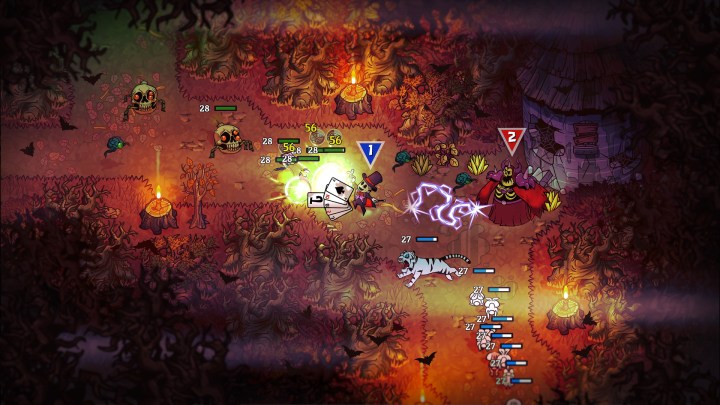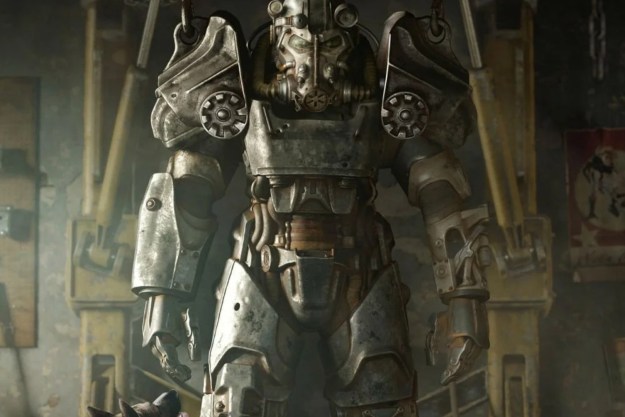Nobody Saves the World, a game from developer Drinkbox Studios, is the latest indie darling to hit Xbox Game Pass on day one. Its hook: Your main character can change into 17 different forms, each of which has unique abilities. As players explore a Zelda-like open overworld and investigate intense dungeons full of swarming enemies, they’ll have to constantly mix and match different forms and abilities to best surmount a given challenge.
It’s also reminiscent of 2021’s worst video game: Balan Wonderworld.
Released in March 2021, Balan Wonderworld lets the player transform into one of 80 different costumes to complete platforming challenges in worlds based on the memories of troubled individuals. Balan Wonderworld‘s transformation-based gameplay tackles some of the same ideas as Nobody Saves the World, but was received much more harshly. Nobody Saves the World has a 79 on the review aggregate website Metacritic; meanwhile, Balan Wonderworld’s score is as low as 36 on Nintendo Switch.
While Nobody Saves the World and Balan Wonderworld are different genres, their core concepts are similar. Nobody Saves the World‘s successes highlight Wonderworld‘s shortcomings and how Square Enix could have improved it.
Quality over quantity
Sometimes, less is more. In Nobody Saves the World, players slowly unlock 17 different forms and over 80 abilities. For example, one form is a Knight whose signature ability is to attack enemies with a sword and whose passive ability gives him an attack stat buff when he’s low on health.
After taking down a group of enemies as a Knight, you can then switch to another form on the fly like the Slug who fires slimy tears and leaves a trail of status effect-inflicting slime behind him.
Players spend ample time with every form, and each is trickled out slowly enough to where these gameplay systems never feel overwhelming.

In Balan Wonderworld, players have 80 costumes with one ability each. Several costumes exist just to jump or attack, making some forms redundant. Players can only carry three costumes at a time.
The fact that each costume only has one ability also means players have to switch every time they want to do a simple interaction, which is a lot more frustrating than fun considering players can only carry three costumes at any time.
The scope of the costume concept was too ambitious for Square Enix. Game Director Yuji Naka even admitted in an interview with IGN Southwest Asia that, “during the proposal stage, I wrote down that it would have 80 different types of action, but I thought that once I actually started making the game, I would run out of steam at around 40.”
While he spun achieving 80 costumes as a positive, Balan Wonderworld ultimately could have benefitted from trimming that number down. Balan Wonderworld prioritized quantity over quality, and it shows next to Nobody Saves the World.

Constant progression
Nobody Saves the World achieves a constant feeling of progression by taking a cue from mobile games. In an interview with the Xbox Podcast, Ian Campbell, the game’s lead designer, points out that the mobile game Jetpack Joyride‘s missions inspired Nobody Saves the World‘s progression.
On top of a typical leveling system, players complete specific tasks to level up individual forms. Form-specific missions could ask players to do something like hit a single enemy 20 times with the Slug’s Tear Burst, while other missions reward players for clearing dungeons or sidequests.
This means players are always working toward a mission, whether it be short- or long-term. By following the lead of grind-heavy mobile games, Drinkbox crafted something very addictive. It doesn’t even get repetitive because there are so many different forms.
Meanwhile, Balan Wonderworld opts for a more generic level-based structure. This setup is standard for platformers, but it also causes all of the costumes to feel one-note and situational .– because most of them are. Some of the game’s best moments come when players go back to a previous level with a new form and unlock something they didn’t have access to before. But it’s far from the mission-based progression that gives Nobody Saves the World its addictive nature.
A bolder structure could have made Balan Wonderworld a less tedious experience.

Mix and match at any time
A few hours into Nobody Saves the World, players unlock an ability that truly allows the game to come into its own: Swapping abilities between forms. Each form comes with four ability slots and four passive perk slots. Each new form has three regular abilities and one passive, so the combinations are endless.

If you want a mermaid that bites like the Rat and excretes slime like the Slug as it moves, you can build that. This system encourages players to customize their experience and gives Nobody Saves the World immense replay value.
Meanwhile, the lack of customization in Balan Wonderworld feels limited by comparison. If each costume could have more than one ability, or add another costume’s power, it would make each one feel customizable instead of restraining.
While Balan Wonderworld feels too linear and bloated due its glut of costumes and generic structure, Nobody Saves the World is the first real gaming gem of 2022. Both games took unique approaches to the character class and power-up systems that we’ve seen in video games for decades, but yielded wildly different results. Playing through Nobody Saves the World will make it more apparent why Balan Wonderworld missed its mark.
Editors' Recommendations
- Xbox Game Pass adds a little and loses a lot this month
- Balan Wonderworld director details behind-the-scenes drama
- The best video games of January 2022




